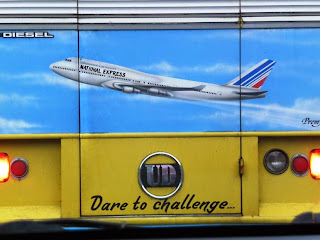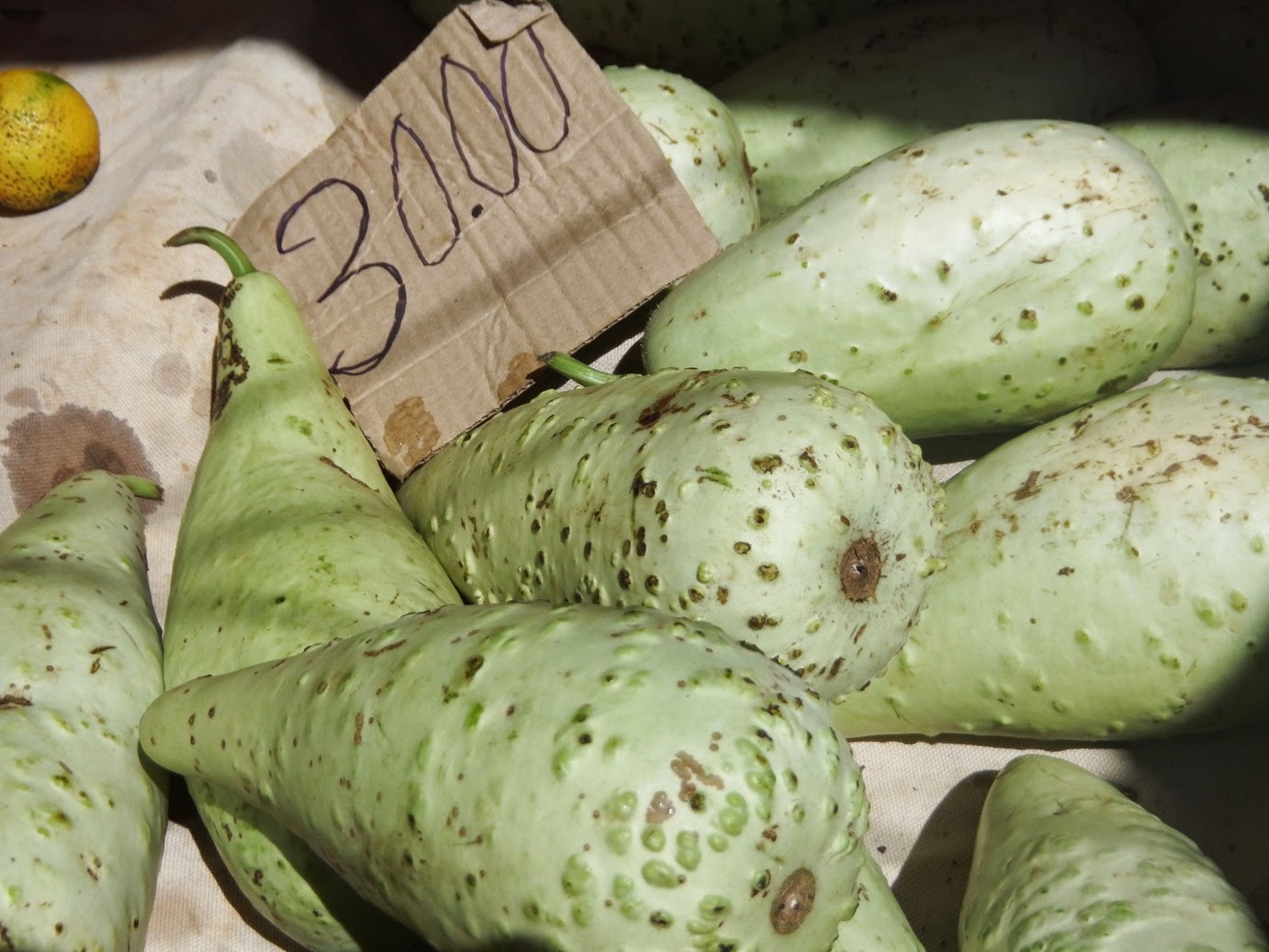While preparing for a holiday in Malta a few years ago, I was surprised to see that one of the "essential sights" listed in all the guidebooks was the bus station in Valletta. I'd seen buses before; what could be so special about Maltese ones?
Ever curious, I did end up going there, and it was worth the detour.
Buses in Malta are traditionally owned by the driver, and although the exterior colour scheme is the same for everyone, each bus is customised with slogans, artwork, trimmings, family photos, and even tinsel. In case you can't read it properly, the driver above doesn't want you to judge him before you know him.
Back on my own island, there are two types of buses; those operated by national companies such as Rose Hill Transport or the National Transport Corporation, and those owned by individuals which run on scheduled routes, but are even more personalised than the ones we saw in Malta.
My first experience of a driver-owned bus was on holiday here in 2012. We were on our way back to Port Louis one evening on what I now refer to as "The Party Bus". There was music, there were flashing lights, there was a singing driver - it was a unique experience. We were also the only people left on the bus when, a good 20 minutes outside Port Louis, we approached the turn off which would take the driver directly home. He decided that continuing to Port Louis just for 2 people wasn't really worth his time, so he radioed (called?) his friend, who happened to be driving his own bus not far behind us, and he negotiated for his friend to stop and for us to switch buses so that he could go home. He politely told us he wouldn't be finishing our journey, but that we could hop on the bus behind at no extra cost. Crazy.
The drivers who customise their own buses have some unusual and creative ideas, to say the least. I started trying to take photos of all the different ones I saw, but it's not easy to take photos from a moving car.
 |
| The Fast and Furious "Highland Shuttle" |
 | |
| GB Travel - there are also some with specific British city names. |
 |
| Princesses |
This last one is a particular favourite. Who decides that the perfect decoration for a Mauritian bus is an aeroplane with Air France livery, but with National Express written on it instead of Air France?! The "Dare to Challenge" part just adds to the mystery.
Continuing on the travel theme, I spotted this "Titanic" bus. It was parked on the waterfront; I hope it's not going to end up at the bottom of the sea like the Titanic did.
I've also seen the ambitious but slightly unrealistic "Worldwide Express". This one was easy to photograph because it was a weekend and the driver had taken his family and friends to the beach on the bus, which is a regular occurence here; when they're not driving official routes, the buses are used for all kinds of purposes. We even took a customised bus on the day of Papy Pierre's funeral - it had been hired as part of the undertaker's package to transport guests between the chapel, funeral service, and cemetery. It was a bit more cheery than riding behind the hearse in a black car.
Last time we were in Mahebourg, I visited the bus station, which is not in any Mauritian guidebook I've read, and took some more pictures, including one I'd been trying to get for a long time - the "Good Luck" bus.
I find this especially amusing and appropriate, considering the way Mauritians drive. It should be written on every moving vehicle! It also says "KiToGété" on the front, which is Mauritian Kréol for "What are you looking at?
The first time I saw this bus, I was surprised to see there was a swastika painted on the side. I didn't know that, long before it was adopted by the Nazis, the swastika was a sign of good fortune, luck, and well-being, especially common in India. It also has religious symbolism, which you can read about here if you're interested. You learn something new every day.
As well as the interest value of the buses themselves, there's a lot to learn about how these buses actually operate, and the habits of the passengers. On the photo below, for example, you can see that the seats on the left are much smaller than those on the right. When we got on the bus, we sat on the right hand side in order to have more room. When Mauritians get on the bus in Port Louis to head south, they will sit themselves into the small seat on the left, even if all the other seats are free. They're prepared to be squished into a corner by a complete stranger, if it means not being on the right hand side. The reason for this? The sun. They don't want to be in the sun, and will do anything to avoid it. I once even saw a woman, forced to sit on the sunny side during rush hour, open her umbrella to protect herself!
Individual bus drivers share some of the routes with the national companies, and go to extraordinary lengths to maximise passenger numbers, as these have a direct impact on their salaries. During the day, some routes might only have a bus every hour, so the driver will go as slowly as he possibly can, in order to collect as many passengers as possible. If he sees someone on the pavement between stops, he might shout to ask if he needs a ride. It's the total opposite of the chaotic Cars Jaunes schedules on Réunion Island.
Rush hour, though, is a completely different story. If the driver sees another bus ahead, ready to poach his potential passengers, he'll do anything to get ahead, including speeding, overtaking on white lines, and stopping in the middle of the road, instead of pulling into the layby at the bus stop. This is when you really need the good luck!
Travelling on a Mauritian bus is definitely an experience not to be missed. If' you're not in a hurry, it's a cheap, (mostly) reliable way to travel, and gives a great view over wall into people's gardens!

























